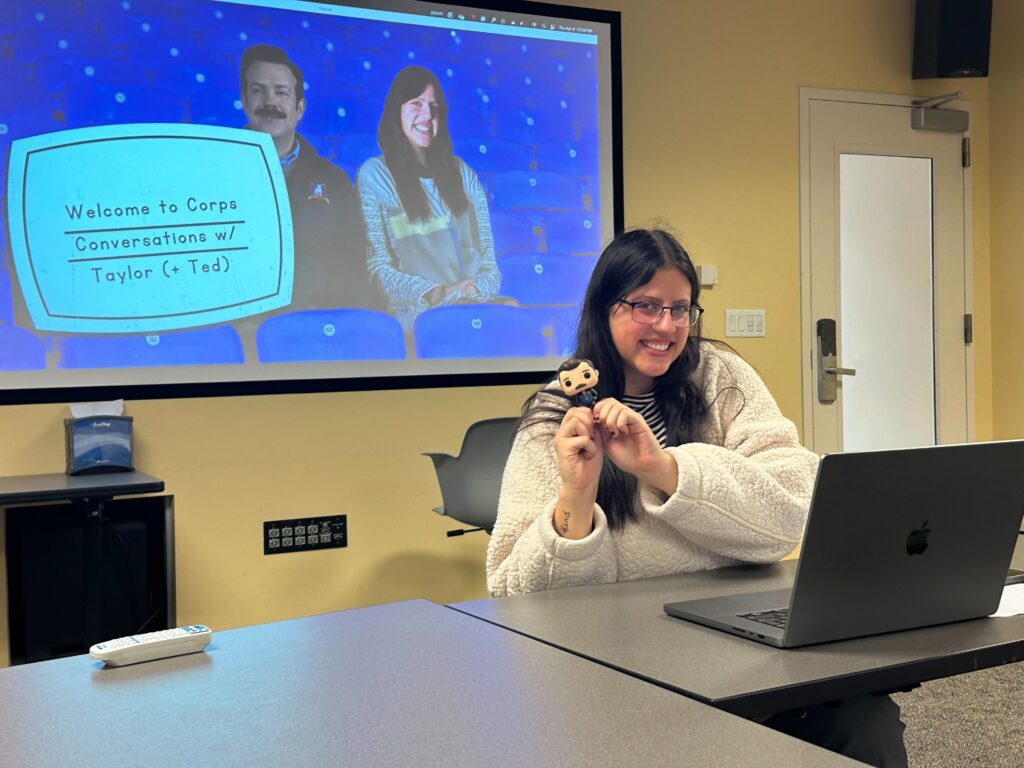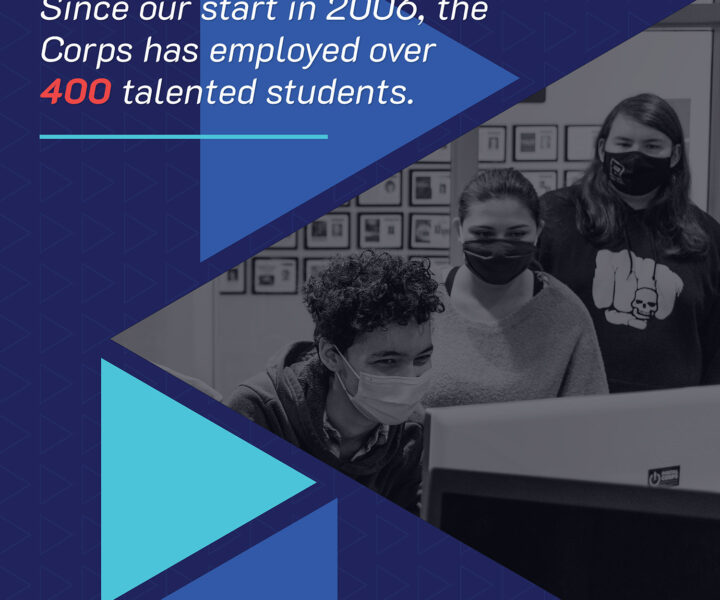
As someone who’s just starting out in the workforce, the thought of stepping up to lead others can be a daunting one. Many young workers feel as though they aren’t qualified to lead, or that older coworkers don’t want to see them step up and take charge.
This, however, is not the case! Taking on leadership roles, even if you aren’t the most experienced in the room, can help diversify the approach your team tackles a project with.
“Research suggests that bringing less experienced people into leadership roles can help unlock the requisite creativity and flexibility. Age-diverse leadership teams create cognitive tension that fosters learning.”
Harvard Business Review
Taking it upon yourself to lead is the kind of initiative bosses and managers want to see. Getting involved and showing interest in your team’s work during each step of the process is a great way to show your employers that you care.
Stepping up as a leader has a variety of different benefits. So, how exactly do you get started?
Leadership Styles
The first step you’d want to take as a prospective leader is figuring out what kind of leader you are. There’s no right or wrong way to lead, as it varies from person to person. The hardest part is just figuring out what works best for you, which can sometimes take some trial and error.
The University of Massachusetts Global has identified four different types of leaders; Autocratic, Democratic, Transformational, and Laissez-Faire.
Autocratic leaders like to play a very involved role in all group decisions and tend to trust themselves to make the decisions rather than those they are leading. Autocratic leaders prioritize efficiency over everything else.
Democratic leaders heavily involve themselves in the process like Autocratic ones but move a bit slower, in order to consider group opinion more. Democratic leaders enjoy making sure each voice is heard, and often take input from others.
Laissez-Faire leaders are similar in that they will utilize input from group members, but they take the least active role out of all the leadership styles. Laissez-Faire leaders typically leave those they are leading with a lot of creative freedom, in the hopes that others will learn things on their own and think critically on how to solve problems. Laissez-Faire leaders will take charge if absolutely needed, but typically wait until they are approached to do so.
Lastly, there are transformational leaders, who are a bit more conceptual than other leaders, and emphasize the growth of their team rather than focusing on the end goal. Transformational leaders enjoy the journey of getting there and want to see others grow during the process. Evolving and learning are the key goals of a transformational leader, and they excel at motivating others to keep up group morale.
Do any of these leadership styles sound like you? If not, it’s okay. Some individuals end up being a mix of two different leadership styles. The best way to figure out which one applies to you is through practice.
Lead With Confidence
No matter what leadership style fits you best, it’s important to lead with confidence. A confident leader makes for a confident team, and others will be more likely to ask for help and produce their best work if they feel that they are behind a confident leader.
As a leader, you must trust your instincts. Doubting the vision you have for a project is a surefire way to lose sight of your end goal and slow down efficiency.
Stay Organized
Lack of organization is one of the worst things a leader can face. Since you’re now managing the work of an entire team rather than just yourself, staying organized is an absolute must. You should know what each person you lead is up to and when deadlines are, since it is your job to keep the group going at a steady pace.
So how do you stay organized? It can vary from person to person, but do whatever it takes – whether that means having a planner, an online calendar, a spreadsheet, or check-ins with team members, anything that works for your team is a valid strategy.
At the Corps
Student leadership is a huge part of the work we do at The Digital Corps. Recently, Communication Team Specialist Taylor Staples hosted a “Corps Conversation” all about student leadership. Corps Conversations are meetings organized and held by students that offer open discussions about work-related topics. During the conversation, Taylor gave a presentation filled with advice on how to face your fears and be an effective leader.

“I wanted my coworkers, especially our new hires, to know how important it is to be able to lead,” she said. “It feels amazing when people listen to you as a leader, and respect what you have to say.”
Since being self-motivated is one of the most important factors of being a Digital Corps employee, students are always getting opportunities to manage others, as well as themselves. Corps students are responsible for keeping track and staying on top of their own project work, which is good practice for when it comes to leading other students on projects.
Even on a day-to-day basis, students at the Corps are constantly stepping up to help out their peers when problems arise on projects. Since everyone at the Corps is still learning, collaborating and sharing your knowledge with peers can be a great way to practice leading and help produce the best possible work for our clients.
Another example of student leadership at the Digital Corps are our Masters—students who already have a lot of knowledge under their belt and are happy to share it with their team members. Masters serve as a liaison between staff leads and students, and are always someone students can turn to for help.
One such Master is Kiri Woodruff, a member of the Development Team. Woodruff’s responsibilities as a Master include leading team-building activities at Corps-wide meetings throughout the semesters, participating in speaking panels across campus, personalized check-ins with other students, and more.
For her, she’s always been passionate about leadership. “I’ve known I liked to lead. I always was a leader in high school. I like being someone people feel like they can go to.”

As someone who fits in with the Democratic leadership style, Kiri values hearing out the opinions of others, even when it gets a bit difficult. “It can be hard to manage the difference in power. It’s especially hard to hold back if I’m leading something I really care about.”
Although it can be difficult to balance out your impact as a leader while also allowing for creative freedom, Woodruff’s passion for her work, as well as her willingness to face problems head-on are two of the reasons she makes for such a fantastic leader at the Digital Corps. Upon the conclusion of the Spring 2024 semester, Woodruff will have had two successful semesters as a leader under her belt, alongside fellow Masters Drew Heiss and Matthew Barton.
Main Takeaways
So, if there’s anything to consider moving forward, it’s that there are leadership opportunities all around you. A team absolutely needs a leader in some form to reach their full potential, and being someone who knows how to bring out the best in their peers is an invaluable skill to have upon entering the workforce.
Having experience as a leader or mentor is something employers love to see, and each time you put what you know about leadership into practice, your confidence in what you do will only grow more and more.



